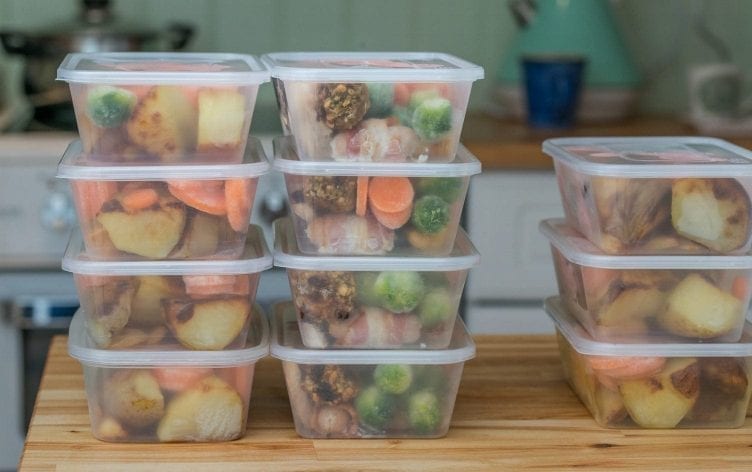
Meal planning is one of the easiest things you can do to set yourself up for healthy eating success. Whether you plan a few days at a time, a week or longer is up to you. A huge benefit: You make all of your eating decisions at once, in a calm, focused manner. It’s easier to avoid stopping for pizza when you know the ingredients for turkey tacos are waiting for you at home.
Meal Planning Basics: Clean Eating Meal Plans for Beginners
SIX SIMPLE MEAL PLANNING TIPS
1. HOW MANY MEALS DO YOU NEED?
Take a few moments to think about what you have going on in the week ahead. Take a quick inventory of everyone’s plans to get a rough idea of how many meals you’ll need. A sample list might be: six breakfasts for everyone, five family dinners, one kids-and-sitter dinner, four solo lunches and one brunch.
2. HOW MUCH TIME DO YOU HAVE TO COOK?
This is an important but often skipped element of effective meal planning. You can plan all you want, but if you don’t have time to execute it, you won’t benefit from it. With this in mind, expand that list with qualifiers such as three make-ahead family dinners, two family dinners in 45 minutes, etc. In short, you want to give yourself more information about what you’ll need to make — the more specific you get here, the easier it is to find dishes that fit the bill.
If you have a busy week coming up, make a mental note to be on the lookout for quick, slow-cooker or make-ahead meals that can be served in a hurry. We’re big fans of the cook once, eat twice approach (i.e. a big batch of chili over the weekend that can get served as-is, piled onto baked potatoes or other veggies or used as lunch later in the week; or roast a couple of chickens on Sunday to have for dinner along with plenty of lean protein for salads and sandwiches as the week progresses).
READ MORE > 3 TIME-TESTED MEAL-PLANNING RULES FOR WEIGHT LOSS
3. PICK AND SCHEDULE DISHES
Using the list you have, choose meals that fit the bill. Look to family favorites or peruse recipe sites for ideas. Consider the time of year, what’s in season and what everyone will feel like eating. When scheduling, take shelf-life into account (i.e. make any fish dish within a day or two of shopping, plan meals with shelf-stable and frozen ingredients for later in the week).
Pay attention to how many servings a recipe makes and the nutritional profiles of the dishes you schedule to make sure you meet your healthy eating goals.
Consider overlapping ingredients to minimize waste and cooking with a plan for leftovers to make the most of your food budget and time. If you want to eat better for less, shop seasonal produce and sales.
Consider creating a master recipe list. Having a list of go-to meals you know work for you and your family is one of the easiest ways to expedite the meal planning process. Every time you find a new meal you love, add it to the master list. You can store recipes in your MyFitnessPal recipe box to quickly calendar meals directly into your food diary. Not only will this help you meet your goals, but it will also take the work out of logging at mealtime.
4. PUT IT ALL ON A CALENDAR
Whether you use a notecard, a printable template or go digital, it’s a good idea to keep a paper copy of your calendar in plain view. Hanging a copy on the fridge is a popular choice. Making your meal plan visible may hold you more accountable for executing the cooking. Plus, your family isn’t constantly asking, “What’s for dinner?” They can just refer to the board.
If you prefer going digital, create a sub-calendar for your meal plan in your calendar app and share it with family members or roommates so everyone knows the plan.
5. WRITE A GROCERY LIST AND SHOP
You might as well do this along with filling out the calendar. Don’t forget to jot down quantities for each ingredient and take a quick inventory of what you already have to avoid overbuying. Save time at the store by grouping your list as they appear in the store. For most grocery stores, that would mean:
- Produce
- Breads & Grains
- Spices & Baking Goods
- Oils & Condiments
- Crackers, etc.
- Beverages
- Dairy
- Meat & Eggs
6. START PREPPING AND COOKING
Chop vegetables, grate cheese, make sauces or otherwise prep what you can in advance if that’s your plan. You can even measure out spices in plastic bags, parboil potatoes and pre-roast vegetables.
Meal planning doesn’t just put you in a great position to stay true to your healthy eating goals, it can save tons of time, since you can prepare similar ingredients in batches and pre-make elements when you have time.
READ MORE ESSENTIAL GUIDES
> Metabolism
> Macros
> Healthy Eating



